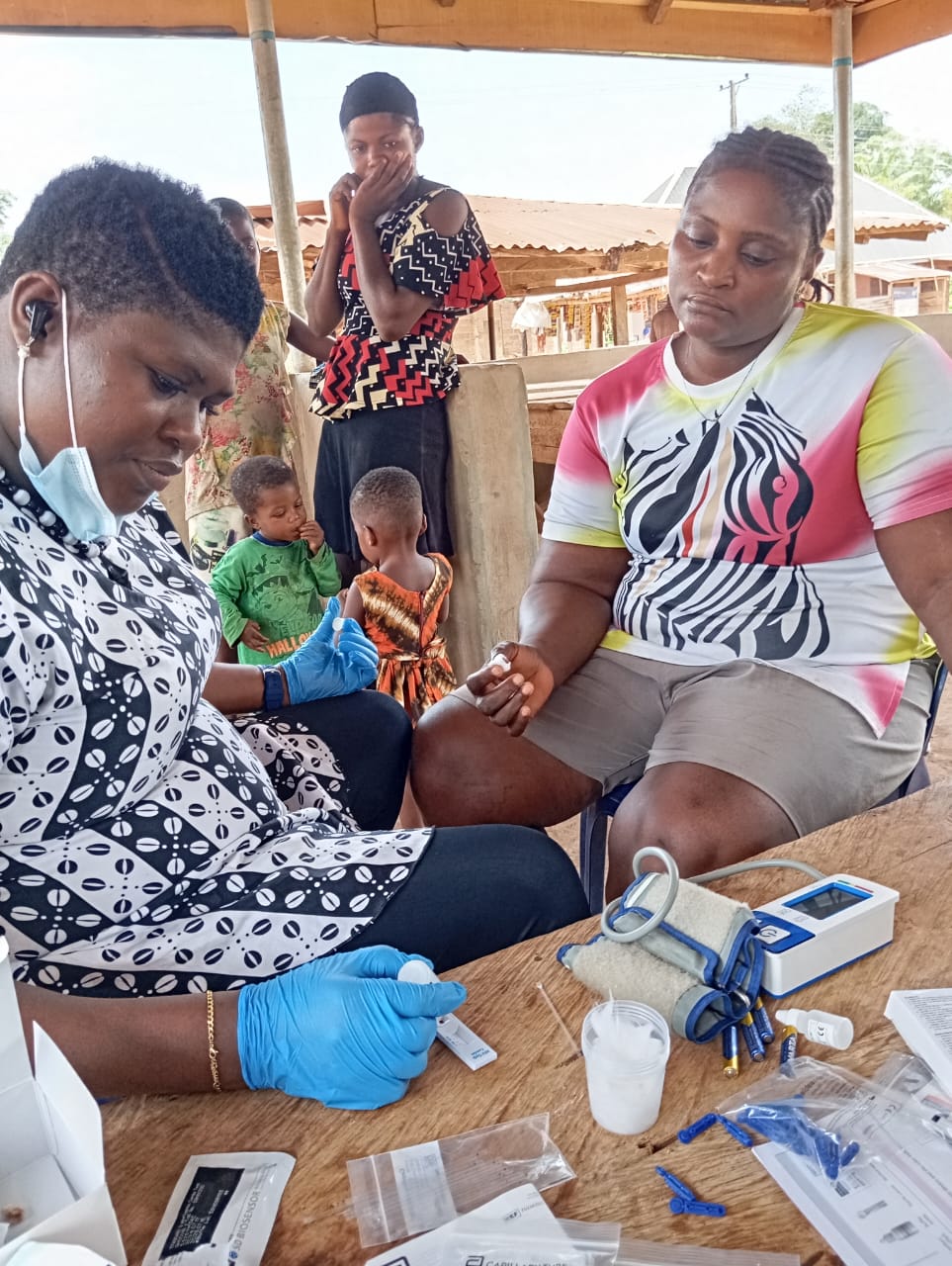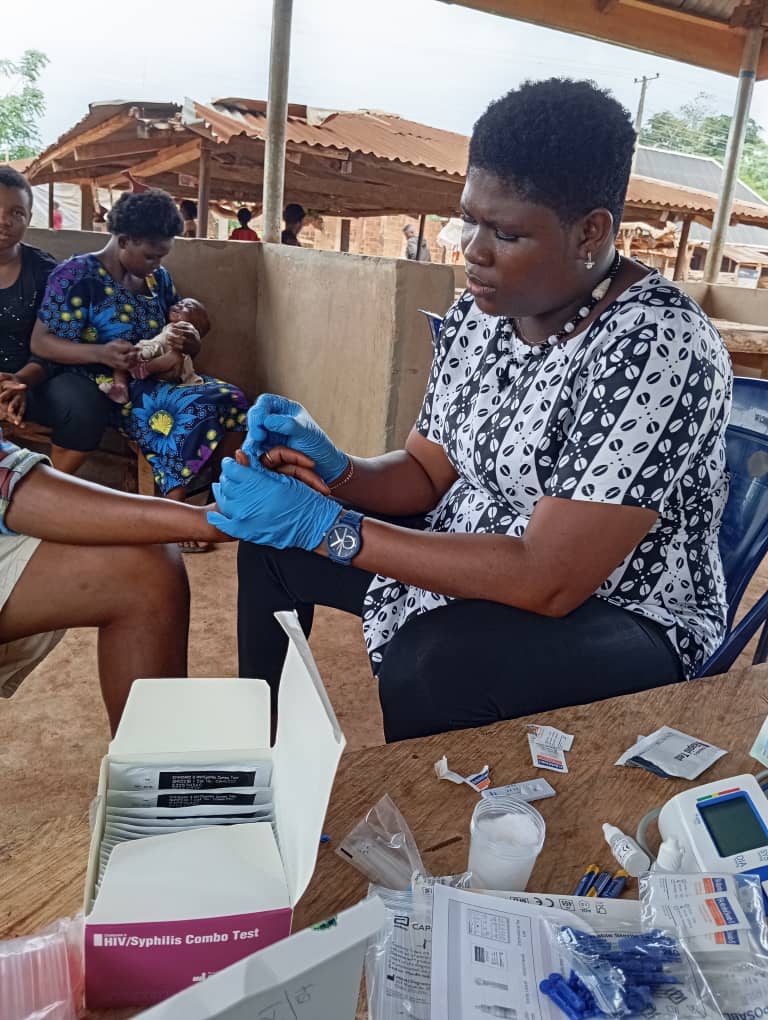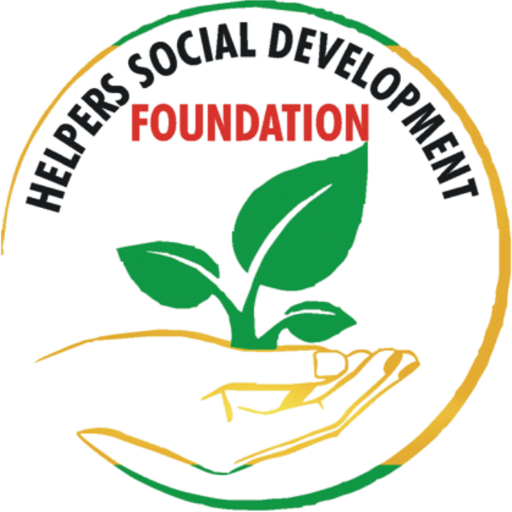 The effect of HIV/ aids in children: challenges and solutions for every child in Nigeria and the contribution of Helpers social development foundation screening rural communities. What happens when a child is born with a virus they never asked for and they have to live with the stigma they never deserved? Every day, children are born with HIV in regions where the stigma associated with HIV patients is high and the treatment is limited. In 2023, 2 million children between the ages of 0-4 were discovered to be living with HIV across the globe. HIV (Human Immunodeficiency Virus) weakens the immune system and if it is not treated, it can lead to AIDS (Acquired Immunodeficiency Syndrome). Though, it is commonly associated with adults, children are also affected.
The effect of HIV/ aids in children: challenges and solutions for every child in Nigeria and the contribution of Helpers social development foundation screening rural communities. What happens when a child is born with a virus they never asked for and they have to live with the stigma they never deserved? Every day, children are born with HIV in regions where the stigma associated with HIV patients is high and the treatment is limited. In 2023, 2 million children between the ages of 0-4 were discovered to be living with HIV across the globe. HIV (Human Immunodeficiency Virus) weakens the immune system and if it is not treated, it can lead to AIDS (Acquired Immunodeficiency Syndrome). Though, it is commonly associated with adults, children are also affected.
Pediatric HIV/AIDS, also known as HIV/AIDS in Children is simply HIV infections in children. In most situations, it is passed from mother to child during pregnancy, childbirth, and breastfeeding. However, some children can get infected through the use of infected sharp objects. Traditional or cultural practices: unsterile circumcision procedures, sexual abuse, exploitation, and unsafe medical practices: blood transfusions using infected blood, use of unsterilized needles or syringes are ways by which HIV can be transmitted. In 2024, 1.37 million children across the globe aged 0-14 were living with HIV. There were 76,000 AIDS related deaths of children globally between 2010 and 2023.
Impact of HIV/AIDS on Children
 HIV/AIDS among children is a significant problem across the globe. The outrageous impact that HIV/AIDS have on children should not be ignored. Some of them include:
HIV/AIDS among children is a significant problem across the globe. The outrageous impact that HIV/AIDS have on children should not be ignored. Some of them include:
- Stigmatization: Children living with HIV/AIDS or identified to be infected with HIV are at risk of stigmatization. This is very common in most developing countries where it is believed that HIV patients should be ostracized from the society. As a result of this, some of these children are unwilling to disclose their status and they have been unable to get proper treatment and counseling.
- High Mortality Rates Among Infected Children: In most countries of the world, there is no proper treatment for HIV. Some scientists have worked hard to produce a vaccine but it has not been actualized. Without proper treatment, HIV infected children have a very high mortality rate. Studies have shown that children infected with HIV from birth are most likely to die before their second birthday. Also, since HIV patients are susceptible to infections because of their weak immune system, some HIV-infected children are not likely to survive if they do not receive adequate medical attention.
- Psychological and Emotional Trauma: Children infected by HIV/AIDS often suffer and go through severe psychological and emotional trauma. Some of these children are often discriminated against and this may make them withdraw from the society and also develop low self-esteem. The trauma may lead to behavioral problems lie aggression, depression and social anxiety. Also, recent studies have shown that the prevalence of depression is higher among children and adolescents with HIV infection than those without HIV infection.
Current Challenges in the Treatment and Prevention of Pediatric HIV/AIDS
According to the Director General of National Agency for the Control of AIDS (NACA), 26,000 children were infected with HIV/AIDS in 2023. Globally, children under the age of 15 account for about 3 percent of all people living with HIV, 9 percent of new HIV infections, and 12 percent of all AIDS related deaths. Children under 1 year of age are among those who are very vulnerable to HIV. Evidence shows that early initiation of antiretroviral drugs in infants with HIV can save lives yet there are still challenges. Some of them include:
- Access to healthcare: Patients with HIV/AIDS often face challenges in accessing healthcare for various reasons, such as transportation, lack of insurance, and limited availability of specialized HIV care, but also financial and language barriers. The economic cost of health care can be a significant barrier for people including children living with HIV, especially in countries with limited resources.
- Stigma: In research conducted among adolescents, about one-third overall stated that classmates knew they had to take medications and did not treat them differently, though most peers were unaware of the medications purpose. A similar proportion claimed that their peers and teachers did not know their HIV status, so stigma was not an issue. Some described fearing that teachers and/or classmates at school would learn about their HIV status.
- Societal Factors and Expectations: It is worthy of note that adolescence is characterized by a desire to fit in. Some HIV infected patients have stated that they have not received treatment to avoid being treated like outcasts amongst their immediate family because they were the only ones who were HIV positive.
- Limitations in Funding and Resources: Funding for pediatric HIV programs is always limited when compared to adult initiatives and this has led to a reduction in the resources for children living with HIV/AIDS. Also, inadequate funding affects the training and retention of skilled healthcare workers. Overall, limited resources will lead to fewer community outreach programs, a reduction in awareness and early diagnosis among children and their families.
Potential Solutions in Curbing Pediatric HIV/AIDS
One of the greatest lies that history and man’s fear of death has told us is that HIV is hereditary or contagious through mere contact. For a very long time, we remained slaves to these misconceptions which stirred fear and led to stigmatization. Though the search for a cure is still ongoing, here are some potential solutions that should help in  curbing HIV/AIDS.
curbing HIV/AIDS.
- Universal testing of pregnant women: The government should introduce universal testing of pregnant women in order to identify HIV cases early and find possible treatment and solutions. Some states have made provision for HIV self-testing kits, which led to an increase in testing by pregnant women. This has helped to ensure early diagnosis and treatment for those tested positive. The protection of children starts with the protection of mothers.
- Anti-retroviral therapy (ART): This is a treatment for people living with HIV. It involves taking a combination of medications daily to suppress the virus and improve the immune system, prevent transmission and slow disease progression. Mothers with HIV should take ART during pregnancy, labor, and breastfeeding to suppress the virus.
- Safe Infant Feeding Practices: Safe infant feeding practices should be introduced to mothers with HIV to prevent the transmission of the virus to the child including prioritizing exclusive breastfeeding for the first six months, followed by the introduction of complementary foods while continuing breastfeeding for at least 12 months, and potentially longer up to 24 months or beyond.
- Strict Punishment for Sexual Violence: Sexual Violence is one of the causes of HIV/AIDS and it ought to be looked into. To prevent consistent recurrence, there should be stricter punishment measures for sexual offenders. In 2010-2012, Violence Against Children Survey (VACS) reported that approximately 27%– 38% of females had experienced sexual violence before age 18 years, and more than half of them had experienced multiple incidents. Also, approximately 7% – 18% of males had experienced sexual violence before the age of 18. HIV/AIDS in children remains a significant global health concern. However, with improvement in awareness, improved healthcare and more funding, many of these barriers would be addressed.
How Helpers Social Development Foundation is Helping to Reduce the Spread of HIV/AIDS in Nigeria
Helpers Social Development Foundation have been committed to building healthier communities by actively working to reduce the spread of HIV/AIDS in Nigeria. We recognize that prevention starts with awareness and access. This is why we organize community-based HIV screening programs, bringing free and confidential testing to areas where access to healthcare is often limited. We also organize outreach programs where we educate people on HIV/AIDS and how it can be managed and prevented. Many people, especially in rural communities, still lack accurate information about HIV/AIDS, including how it affects children and the health implications if it is left untreated.
We believe the fight against HIV/AIDS is a shared responsibility. This is why we are calling on corporate bodies, government agencies, non-governmental organizations (NGOs), and individuals to join us in this mission. Your support, whether through funding, collaboration, or volunteer services can help us reach out to more communities, screen more individuals, and save more lives.
REFERENCES
Together for Girls. “Building A Safer World for Children: Together for Girls Stakeholder Report 2010-2012.
https://pmc.ncbi.nlm.nih.gov/articles/PMC PubMed Central
https://openaidsjournal.com The Open AIDS Journal
Challenges to HIV treatment adherence amongst adolescents https://sahivsoc.org
“The impact of HIV/AIDS on children in developing countries – PMC” https://pmc.ncbi.nlm.nih.gov/articles/PMC2722540/
“Medscape Registration” https://emedicine.medscape.com/article/965086-overview?form=fpf
“HIV estimates for children dashboard (global/regional level) – UNICEF DATA” https://data.unicef.org/resources/hiv-estimates-for-children-dashboard/
Helpers Social Development Foundation is a sub-recipient of the Global Fund grant and currently implements HIV/AIDS and Tuberculosis community screening programs in Enugu State in collaboration with Caritas Foundation Nigeria. This cause is deeply important to us, as it directly affects the health, future and well-being of vulnerable children in our communities. HIV/AIDS in Children: Challenges and Solutions

